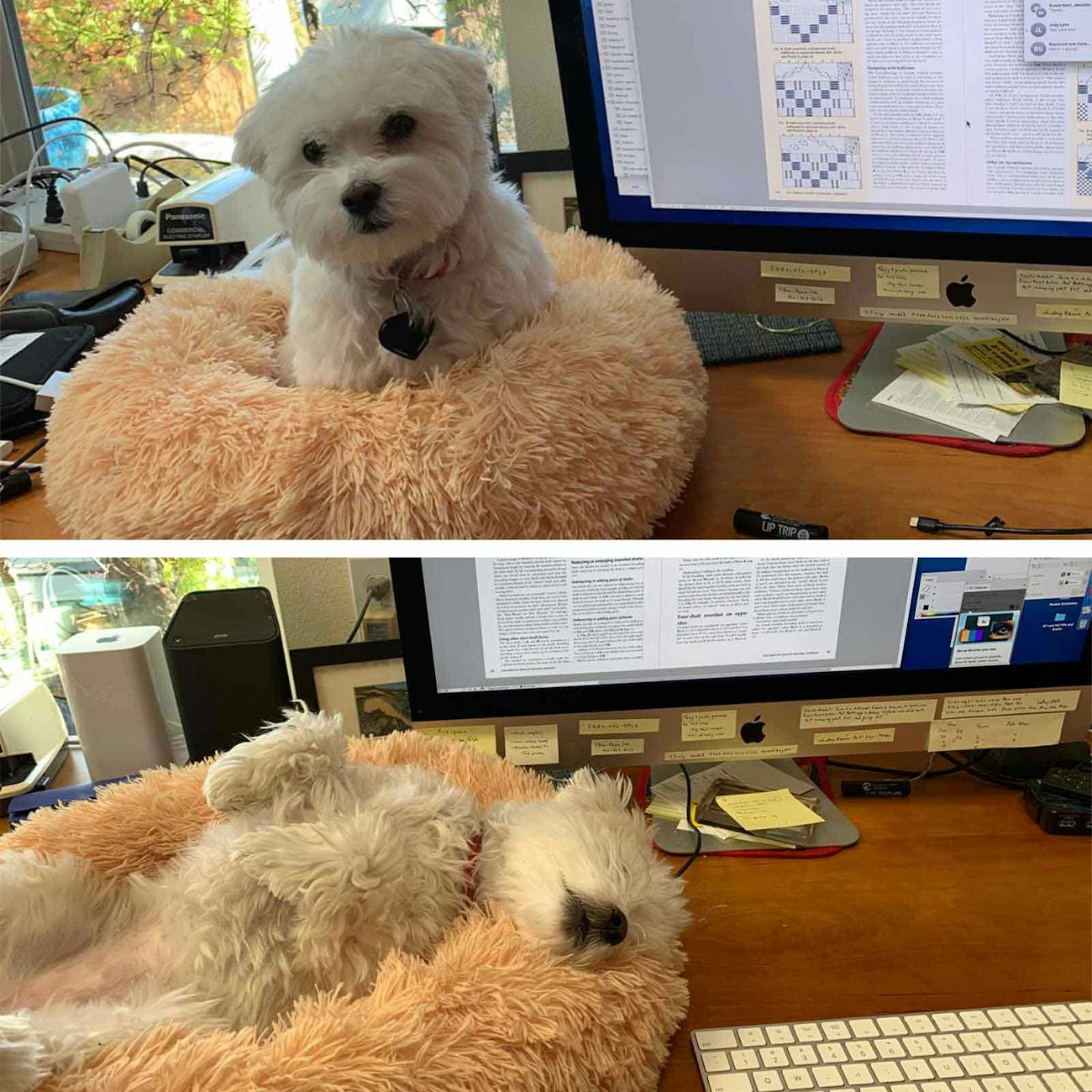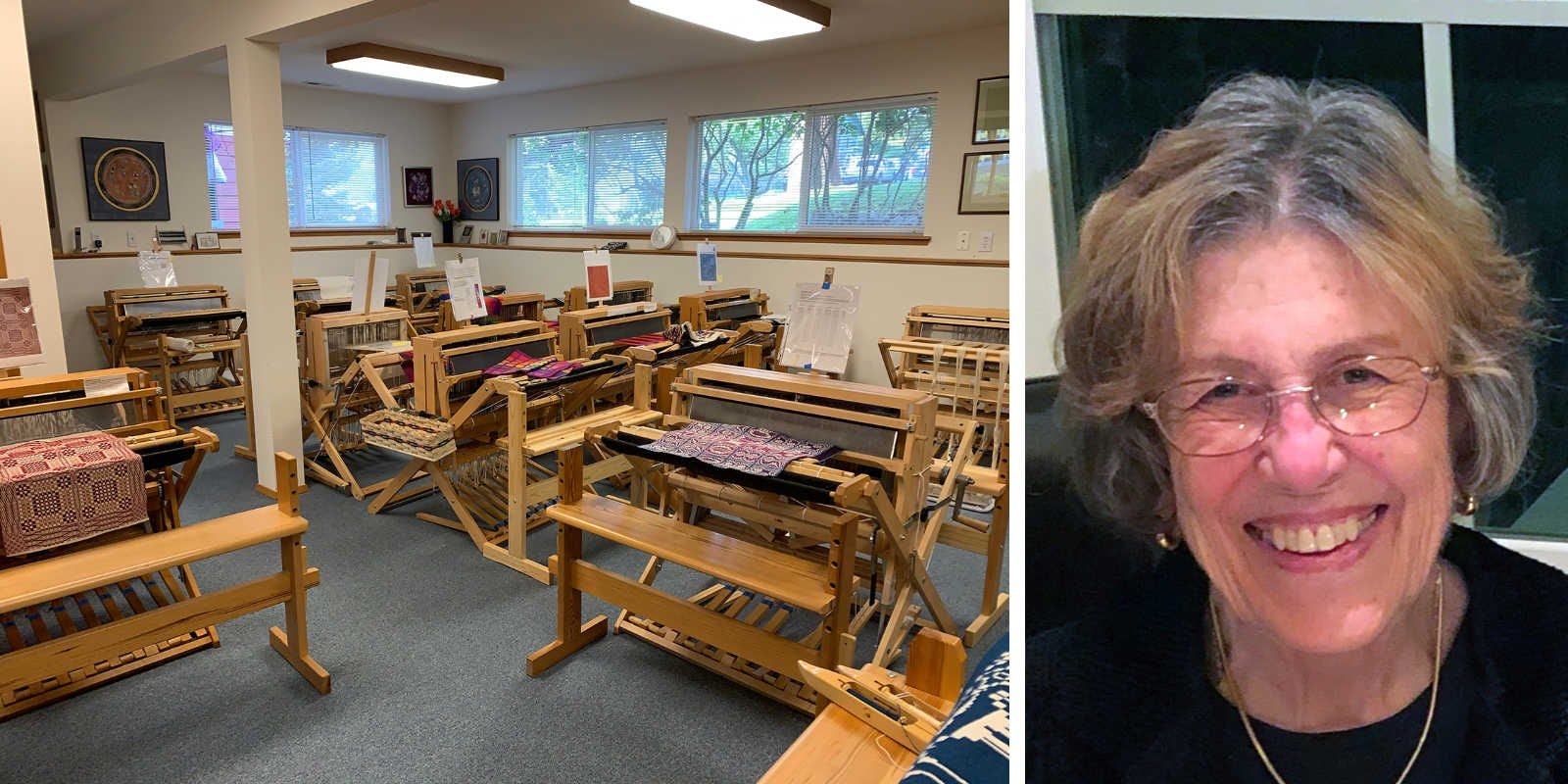Several times daily, I walk through The Weavers’ School and hear in my mind the music from Les Miserables and sing to myself: “Empty looms and silent shuttles...”
I picture a class in session, with shafts clanging, bobbins clacking, happy chatter (“1-2-3-4-1-4-3-2-1...oops, no, wait a minute...”). I once sent an audio of the sounds of students weaving to our local NPR station’s Sound of the Day. I loved hearing them play it on air. The families of weavers who weave late into the night might prefer silent looms, but I love the rhythmic sound of many shafts (all those metal heddles) rising and falling.
Weaving is a craft you usually do alone. Most looms aren’t portable the way knitting needles are. We have to work harder to get together—in workshops with our table looms or lugging our not-so-portable floor looms in and out of cars, up and down stairs. Because it’s so hard to weave together, our relationships with other weavers are even more cherished. We phone, email, Instagram, and now Zoom. We are used to connecting without being able to be in the same place and treasure even more the conferences, guilds, and workshops when we can.

Sadye starts the day ready to help out as Madelyn works and ends the day with a cozy desktop nap. Photo Credit: Madelyn van der Hoogt
We see ourselves as part of a family. I have loved during this time of extra isolation answering questions such as: For draft #227 in the Carol Strickler book, would silk work well for a scarf? In the September/October 2017 issue of Handwoven, page 63, would it be okay to substitute 3/2 pearl cotton? Many weavers have emailed me to tell me that they are weaving more than ever now, that weaving is an even greater joy. Weaving is meditative, physical, challenging but rewarding, and psychologically healing.
I spend most of my time during these strange days working on a book. When I get tired of writing about weaving, though, I just have to go do it. When Sadye (named after Sadye Tune Wilson, the author of Of Coverlets) gets tired of helping me write about weaving, she takes a nap.
—Madelyn

